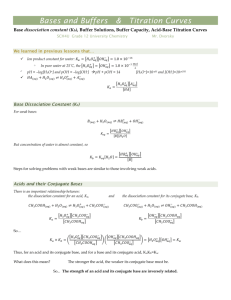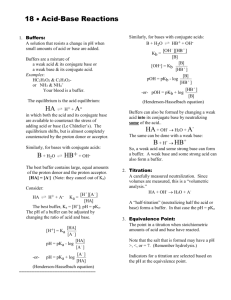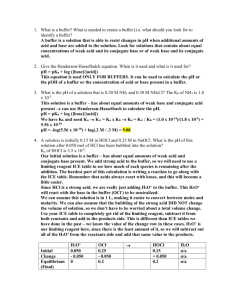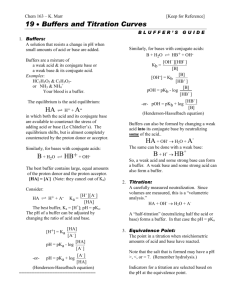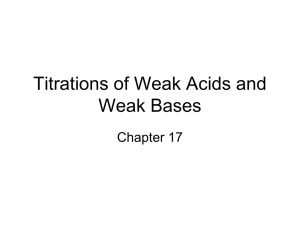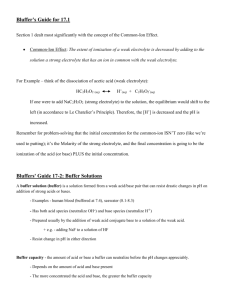The Common Ion Effect: The extent of ionization of a weak
advertisement
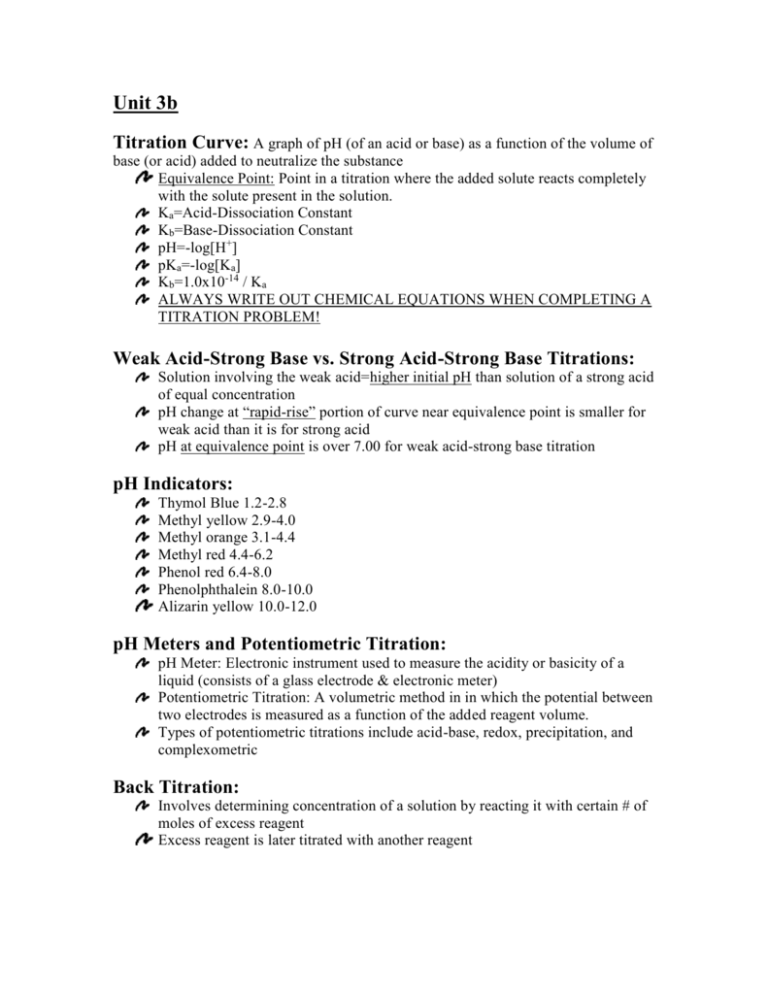
Unit 3b Titration Curve: A graph of pH (of an acid or base) as a function of the volume of base (or acid) added to neutralize the substance Equivalence Point: Point in a titration where the added solute reacts completely with the solute present in the solution. Ka=Acid-Dissociation Constant Kb=Base-Dissociation Constant pH=-log[H+] pKa=-log[Ka] Kb=1.0x10-14 / Ka ALWAYS WRITE OUT CHEMICAL EQUATIONS WHEN COMPLETING A TITRATION PROBLEM! Weak Acid-Strong Base vs. Strong Acid-Strong Base Titrations: Solution involving the weak acid=higher initial pH than solution of a strong acid of equal concentration pH change at “rapid-rise” portion of curve near equivalence point is smaller for weak acid than it is for strong acid pH at equivalence point is over 7.00 for weak acid-strong base titration pH Indicators: Thymol Blue 1.2-2.8 Methyl yellow 2.9-4.0 Methyl orange 3.1-4.4 Methyl red 4.4-6.2 Phenol red 6.4-8.0 Phenolphthalein 8.0-10.0 Alizarin yellow 10.0-12.0 pH Meters and Potentiometric Titration: pH Meter: Electronic instrument used to measure the acidity or basicity of a liquid (consists of a glass electrode & electronic meter) Potentiometric Titration: A volumetric method in in which the potential between two electrodes is measured as a function of the added reagent volume. Types of potentiometric titrations include acid-base, redox, precipitation, and complexometric Back Titration: Involves determining concentration of a solution by reacting it with certain # of moles of excess reagent Excess reagent is later titrated with another reagent The Common Ion Effect: The extent of ionization of a weak electrolyte is decreased by adding a strong electrolyte to the solution that has an ion in common with the weak electrolyte. Buffered Solution: A solutions containing a weak acid and its conjugate base or a weak base and its conjugate acid. A buffer is used to control the pH of a solution Because of the common ion effect the mixture of a weak acid and its conjugate base reduces the ionization of both A buffer also reduces changes in pH due to the addition of a strong acid or strong base. Strong acid added to a buffer reacts with the conjugate (weak) base to form more of the conjugate (weak) acid. Strong base added to a buffer reacts with the conjugate (weak) acid to form more of the conjugate (weak) base. Henderson-Hasselbalch Equation: Ka [H ] [: A - ] [HA ] log K a log ( [H ] [: A - ] ) [HA ] log K a log[H ] log [A - ] [HA] By Definition - log [K a ] pK a - log[H ] pH Therefore : pK a pH log [A - ] [HA] Buffer Capacity: The amount of acid or base the buffer can neutralize before the pH begins to experience a noticeable change Depends on the amount on the amount of acid and base from which the buffer is made The greater the amounts of the conjugate acid-base pair, the more resistant the ratio of their concentrations (and therefore pH) is to change

